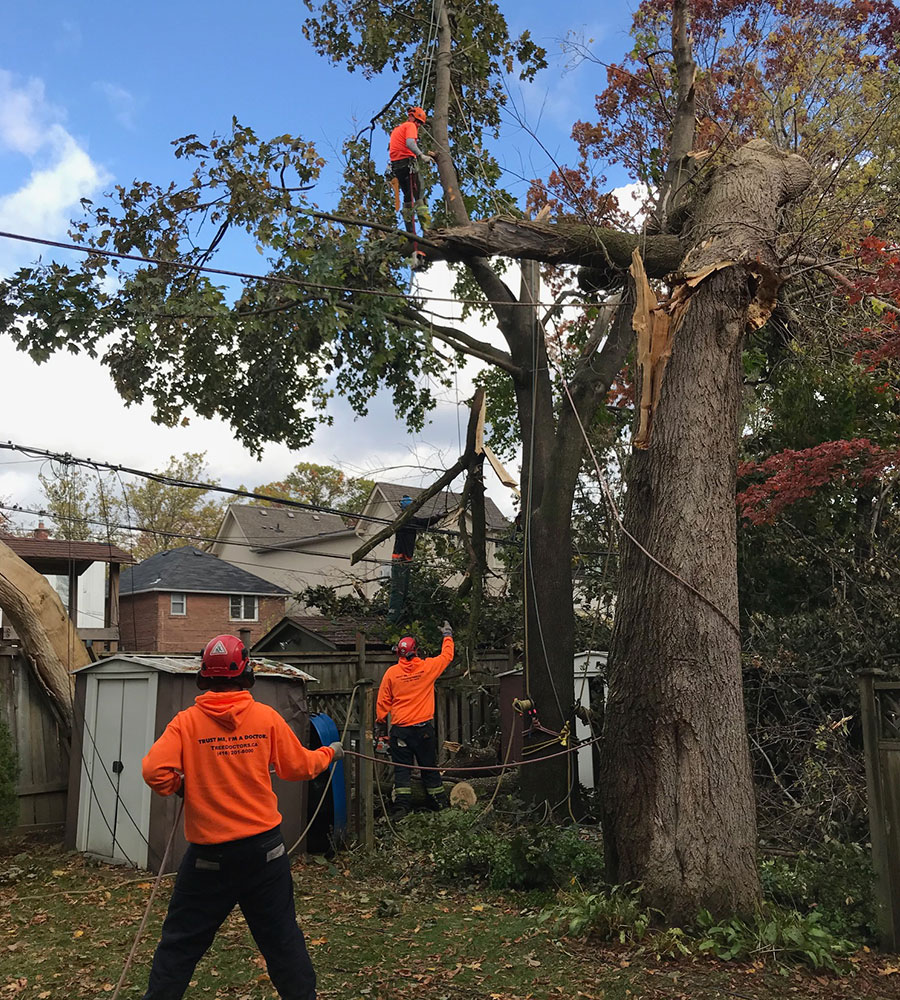Palm trees are a broad collection of tropical and subtropical plants distinguished by their long, slender trunks and enormous, often feather-like leaves at the top. These trees are members of the Arecaceae family and are primarily found in warm, humid climates around the world. Palm trees vary in a variety of shapes, sizes, and species, making them very adaptable to a variety of climates and settings. Some of the most well-known palm tree species are the coconut palm, date palm, and royal palm. In this guide we will discus how you can remove palm trees with easy steps.
Reasons for Palm Tree Removal
Palm trees are frequently removed for a variety of practical reasons. One of the most common reasons for palm tree removal is the existence of disease or pest infestations. If a palm tree becomes seriously afflicted, it may pose a risk to other neighboring trees, forcing its removal to prevent the problem from spreading.
Safety concerns also drive palm tree removal, especially when trees are elderly, physically insecure, or have been damaged by storms. A leaning or unstable palm tree can constitute a hazard, potentially causing property damage or harm if it falls.
Certain palm species’ invasive root systems can harm underground utilities and structures, necessitating their removal in order to protect infrastructure. Aesthetic preferences, landscape redesigns, high maintenance expenses, and the necessity for room for new construction or landscaping elements can all contribute to palm tree removal. Finally, while palm trees are cherished for their look and cultural significance, practical reasons occasionally demand their removal.
Steps to Remove Palm Trees
Palm tree removal is a task that demands careful preparation and execution to ensure safety and efficiency. Here is a more detailed step-by-step method for removing palm trees
Assess the situation:
Begin by properly examining the circumstances. Determine the size, species, and overall condition of the palm tree. This assessment will assist you in efficiently planning the removal process.
Check for any surrounding structures, utility wires, or impediments that may interfere with the tree removal operation. Make sure there is enough room for the tree to fall without causing damage or providing a risk.
Obtain all required permits:
Check local tree removal restrictions and ordinances. Depending on where you live, you may need permits or authorization to remove a palm tree. Before starting, be certain that all relevant paperwork is in order.
Tools and material:
Prepare the tools and equipment you’ll need for the job.
- A chainsaw
- A handsaw
- pruners,
- A shovel
- Wear protective equipment such as robust gloves, safety goggles, and a helmet to prioritize safety.
Procedure
Choose the direction in which you want the palm tree to fall. Make sure it falls away from any structures, electricity wires, or barriers that could be damaged during the operation.
Begin by trimming the palm tree’s fronds (leaves). Begin at the bottom and work your way up the tree. The fronds are removed to keep them from interfering with the removal procedure.
Place yourself on the side of the palm tree facing the chosen fall direction.
Make a horizontal felling cut about one-third of the way through the tree on the side facing the anticipated fall direction. This cut will leave a notch or wedge in the tree.
To produce a wedge, make a second cut slightly above and behind the first.
On the opposite side of the tree, make a horizontal cut slightly above the bottom of the felling cut, leaving a little uncut area known as the hinge. The hinge directs the fall of the tree.
Remove the remaining uncut section of the hinge with the chainsaw. The tree will begin to fall as you do this.
As the tree falls, go quickly and safely to your designated safe area.
Examine the leftover stump once the tree has fallen. Depending on your preferences and future intentions for the region, you can either remove the stump totally or grind it down to ground level with a stump grinder.
Clear the area of all rubbish and palm tree parts. Depending on local requirements, properly dispose of the removed palm tree or consider recycling it for mulch or other uses.
Consider Getting Professional Help
If you are unsure about any part of the process, if the palm tree is very huge or close to structures, or if safety is an issue, consider calling a professional tree removal service. Professionals have the knowledge and equipment to ensure a safe and effective removal process.
Remember that tree removal can be hazardous, and safety should always be a primary priority. If you have any worries or concerns about removing a palm tree, it is best to speak with a professional arborist or tree removal expert to ensure the job is done safely and correctly.
The Best Time for Palm Tree Removal
The optimal time to remove a palm tree is during its dormant season, which normally happens in late winter or early spring. This time period is great for a number of reasons. First, during the dormant season, the tree is less actively developing, which means it expends less energy and has less sap flow.
This makes the tree removal process less traumatic for the palm tree. Second, the lower foliage during the dormant season improves visibility and access to the tree, making the removal safer and more efficient.
Furthermore, removing the tree before the start of the growing season provides for a smoother transition in landscaping or planting new trees, ensuring the new additions have optimal growing circumstances.
FAQS
Can I remove a palm tree by myself, or should I call a professional?
While it is feasible to remove a palm tree yourself, employing a professional is suggested, especially for larger or more difficult removals. Professionals have the knowledge and equipment to assure safety.
Are there any legal requirements or permits needed to remove a palm tree?
Yes, municipal laws may demand permits for palm tree removal. Before starting, you must consult with your local authorities and secure all necessary permits.
When is the ideal time of year to cut down a palm tree?
The optimal period is during the tree’s dormant season, which is often in late winter or early spring. The tree is healthier during this season, making removal easier.
How do I get rid of the removed palm tree?
Dispose of the removed palm tree properly by using local garbage disposal services, recycling centers, or reusing it for mulch or other uses.
Are there alternatives to complete palm tree removal, such as relocation?
In some circumstances, palm trees can be relocated instead of eliminated. Consult with a specialist to learn more about this option.
Conclusion
Removing a palm tree needs careful planning, safety precautions, and adherence to local restrictions. Whether you choose to remove a palm tree yourself or hire a professional, ensuring safety and correct disposal is critical. You may properly remove a palm tree and prepare the space for future landscaping or construction by following our detailed advice and considering expert aid when needed.





